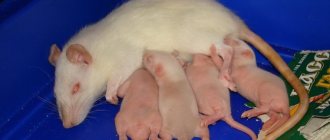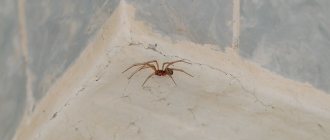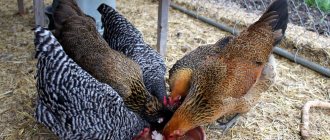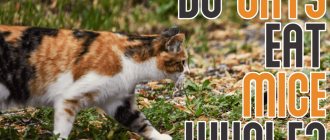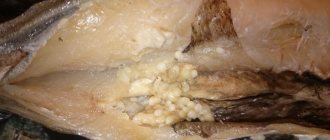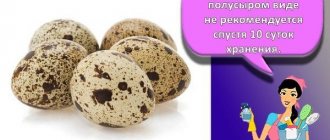According to the latest data from zoologists, rats are second in number only to insects. And some scientists believe that there are even more rodents. Their numbers are growing steadily, regardless of the wealth of the country they have chosen to live in. In Moscow, according to the most approximate estimates, there are forty rats for every city dweller, including migrant workers. The vitality of the latter is explained by their omnivorous nature (we will discuss what rats eat a little later) and the speed of reproduction. But an equally important factor is their adaptability, intelligence and intelligence. Thanks to these qualities, rats quite confidently fit into the category of pets, sometimes showing enviable devotion to the owner and the ability to take into account his wishes. And now about everything in more detail and in order.
Features of rat nutrition
Coming up with a list of what rats eat is almost impossible because they eat everything. The only exceptions are absolutely inedible things, although even wires and polyethylene can be chewed and partially swallowed. However, for all their indiscriminateness, rats treat food in the wild quite reasonably. In the wild, they never overeat, so they do not become obese. If a rat is lucky enough to get a high-calorie piece, it eats less food. If what rats eat is low in nutrition, the amount consumed increases accordingly. If there is a lack of some minerals or vitamins in their body, these rodents look for foods with a high content of the necessary substance.
It should be noted that rats (domestic or wild - it makes no difference) eat all the time. If you forget to feed your pet for at least two days, it will die. Therefore, in the wild, animals are constantly in search of food, and, if possible, they create reserves.
Recipes for preparing poison for rats with different baits and poisons
Generally speaking, recipes for poisoned baits for killing rats and mice can be very diverse; it is only important to adhere to the rules noted above when choosing a food base and observe the proportions indicated in the instructions for using the corresponding poison (so that the rat does not notice the danger).
Here are several ready-made recipes that have been tested many times in practice and in most cases give good results when fighting rats:
- 100 grams of minced meat (no matter meat or fish), 850 grams of crushed bread and 50 grams of Zookoumarin;
- 870 grams of crushed bread, 100 grams of onions fried in vegetable oil, and 30 grams of Ratindan;
- 890 grams of crushed bread, 100 grams of vegetable oil and 100 grams of Rat;
- 700 grams of crushed bread, 150 grams of mashed potatoes, 50 grams of vegetable oil and 30 grams of Ratindane;
- 990 grams of cool wheat or oatmeal porridge and 10 grams of Rat.
For these recipes, poisons are taken in the form of powders (dusts) - they are sold in hardware stores.
The ingredients of all recipes are simply mixed thoroughly and placed in portions of about a teaspoon in places where rats can easily find them.
Taste preferences of wild rats
Despite all the promiscuity of the creatures we are considering, there are some foods that rats like more than others. Thus, if there is a choice between wheat and wholemeal flour, preference will be given to the latter. Although if the grain is thoroughly wet or mixed with odorless vegetable oil, attention will be divided equally between both “dishes”.
Sweets are what rats (both tame and free) eat with special pleasure. Moreover, it doesn’t matter how nutritious the food is, sweetened with saccharin will do. So in this case, it is not the calorie content (and, accordingly, the survival factor), but the taste sensation that is important.
The following fact is noteworthy: what a white rat eats can be categorically rejected by its wild relatives. For example, it is well established that laboratory albinos prefer food with the addition of anise and butyric acid, while ordinary rats diligently avoid it. Moreover, if experimental cubs are fed only food with such additives, and then offered a treat without them, they will not hesitate to change the imposed diet. Scientists believe that the attachment of white rats to these “flavors” is genetic, innate.
Peppermint treat
Ingredients:
- 1 medium overripe banana.
- 2 chicken eggs.
- 3 tbsp. spoons of honey.
- 3 tbsp. tablespoons of liquid coconut oil (can be replaced with sunflower oil in the same amount).
- 1/2 teaspoon mint flavoring.
- 1/2 teaspoon baking powder.
- A quarter cup of carob (roasted carob powder). A small amount of cocoa can be substituted, but this is not recommended for animals. Therefore, try to find an original product.
- Oat flour.
Cooking procedure.
1. Mash the banana in a bowl.
2. Beat eggs into the resulting mass, add honey, baking powder, cinnamon and coconut (sunflower) oil.
3. Add oatmeal to the mixture to form a firm but slightly moist dough.
4. Divide the resulting volume into 2 equal parts.
5. Pour 1/4 cup of carob powder into one half, and add the same amount of flour to the second half. A hard lump should form that does not stick to your hands.
6. Roll out 2 rectangles, 9-10 mm thick.
7. Place the layers of dough on top of each other and roll along the long side. Wrap the resulting sausage in plastic wrap and put it in the refrigerator overnight.
8. Preheat the oven to 180 degrees.
9. Cover a baking sheet with parchment paper.
10. Remove the film and cut into 3-3.5 cm rounds.
11. Place on a baking sheet. During cooking, portions of dough will not increase in volume, so you can place them close to each other.
12. Bake for 10-15 minutes.
If you want to please your pet with a crunchier treat, cut the rolls into thin slices (about 1 cm), and after cooking, additionally dry them in a warm oven or even in a non-stick frying pan.
The finished product is stored for a long time in a dry place. So, by baking peppermint rolls once, you can treat your four-legged pupil with them for a long time.
Bon appetit to your dog!
I like it I don't like it
What to feed your pet
The diet of a tame animal must be calculated and diversified, because ornamental rats eat everything, like their wild relatives, but they move less, and therefore they can become obese. And if they lack some element, they will not be able to find it on their own. Pet stores sell balanced foods, when developing which manufacturers took into account what domestic rats eat and what they need most. However, you should not limit yourself to only such products if you want to have a healthy animal in the house, and not regularly take it to the veterinary clinic. It is necessary to give your pet boiled meat, seafood and tripe. By the way, even kitten food is suitable. The diet must include vegetables (carrots, cucumbers, turnips, cabbage), berries and fruits. Instead of multivitamins, you just need to regularly feed your pet rat with greens - lettuce, dandelion and clover leaves, dill. Remember what rats eat in the wild. Cereals, that's right! The grain can be given in its usual form, or it can be sprouted. Oat and wheat sprouts are especially useful in this regard - in winter they are a valuable source of vitamin E.
Protecting foam from pests
Polystyrene foam is a very convenient material for thermal insulation and sound insulation. But it is various foam plastics that are most susceptible to attack by mice and rats. These are materials such as extruded polystyrene foam, polyurethane foam, penoizol, penoplex. These materials are artificial, so they are not suitable for mice as food, but they chew them and turn them into dust. In the resulting voids, rodents make nests for themselves. To protect it from rodents, you need to take certain measures:
- 1. You should choose dense types of foam for insulation, since it is inconvenient for mice to gnaw on dense material.
- 2. Proper installation of the foam is necessary. It must be carefully puttied and sheathed using special materials, selected individually. The goal of proper installation is to prevent the appearance of cracks, since rodents enter the home through the cracks.
- 3. All holes must be sealed with polyurethane foam.
- 4. It is advisable to provide metal sheathing along all walls at pest entry level. They won't be able to handle metal.
These measures must be taken into account at the construction stage. If they have not been accepted, all that remains is to take actions aimed at repelling rodents:
- 1. The easiest way is to get a cat. Just the smell of a cat in the house repels mice.
- 2. You can install an electronic repeller, but if the area of the house is large, one device will not be enough, you will have to install several. Such repellers emit ultrasound of various frequencies, which causes fear in rodents and forces them to leave the building.
- 3. All food supplies must be kept out of the reach of rodents.
- 4. The home must be kept clean.
Folk remedies are effective to protect polystyrene foam. They are based on the use of various plants that repel rodents with their smell. These are plants such as pine needles, tobacco, mint, wormwood. These dried plants can simply be scattered in corners. During the construction phase of a house, you can treat the foam with lime or red pepper.
Some people use boric acid to repel pests, but its effectiveness in controlling rodents has not been proven.
The use of poison is generally undesirable, because the use of poison will cause the death of rodents right in the nests. This will create an unsanitary area under the casing and cause a cadaverous odor. In addition, there is a risk of poisoning for the residents themselves.
If none of the above methods help, you need to contact the sanitary and epidemiological station, whose employees will come and carry out a complete disinfection of the premises and the elimination of all rodents.
Medicinal products
No matter how hard you try to protect your pets, it is very possible that they will still get sick. In this case, you need to be more careful about what rats eat: some foods will help them overcome illness. So, if your animal is already “aged”, so that it does not suffer from arthritis, add a little garlic and ginger to its food. As a preventive measure for all kinds of viral infections, you can give onions, prunes, cranberries, and strawberries. If your pet needs antibiotics, before injecting him with medicine, it is better to feed the patient bananas, eggplants, raspberries, plums, and the same garlic and onions. You can feed the animal with echinacea decoction.
Food preferences
Every pet rat has its own favorite treat. Some animals prefer insects. They can be given mealworms, which can be purchased at your local pet store. Other rats love to eat sweets. They should not be abused, because... they are high in calories. It is better to use treats as a reward during the training process. They can also be given after medical procedures or during periods of illness. A tasty treat should be safe for your pet. Apples are suitable as a treat. It is forbidden to feed the rodent smoked sausages, alcohol, chocolate, carbonated drinks, canned goods and leaves of indoor plants.
Vegetables, fruits and other foods that are given little by little
When discussing what rats eat (we are talking exclusively about pets), we should discuss not only the quality of the food, but also its quantity. So, you need to know what food can harm your pets if they receive it regularly and in large doses. Among such products are:
- Pears. They are fixed, so give no more than once every two weeks.
- Grape. It can “pull” fermentation along with it.
- Beet. Diarrhea is almost guaranteed, but if you didn’t experience it the first time, you can give it, because it’s useful. Just don't overdo it!
- Eggs. Be sure to cook it, it is better to buy quail and offer it no more than once a week.
- Sour cream. Only as a treat, little by little and with the same frequency.
How to quickly get rid of mice: 5 ways
Victor® has developed a number of quick fix solutions that require minimal effort on your part.
- Victor® Scent-Away™ Repellents. Rodent repellents are drops containing peppermint oil, the strong smell of which rodents cannot stand.
- Victor® Tin Cat® Humane Traps. Allows you to catch several mice at once. After this, you can release them in an open area.
- Hygiene traps. Don't want to touch the mouse? Use Kill & Seal™ Hygienic Mouse Trap and you can easily dispose of your rodent without touching it.
- Electronic traps. Quickly kill a mouse, destroy up to three mice in one installation.
- Rodenticides. If you're dealing with outdoor pests, the Victor® Fast-Kill Refillable Bait Station will help you eliminate your rodent population in no time.
Poisonous grass
So, we figured out what rats eat. But you also need to have an idea of what is dangerous for them. Especially if your pet has the opportunity to move freely around the apartment, and you are a fan of home gardening. If he can only get potato, cherry, tobacco, and euphorbia leaves from your hands (that is, you just need to check that the animal does not eat them), then he can gnaw indoor flowers without your knowledge. The following house plants are poisonous to rats:
- dieffenbachia;
- indoor feces;
- azalea;
- begonia;
- ivy (any variety);
- amaryllis;
- cyclamen.
The worst thing is that the rat cannot be forbidden to eat flowers, or hide them so that he cannot get to them. If you have such plants in your house, you will have to keep the animal in a cage.
Prohibited
Some foods are generally contraindicated for these animals, although not as dangerous as herbs. Of the things that rats absolutely cannot eat, blue cheese should be mentioned first. And in general, any cheese is fatty and salty, and therefore leads to obesity in pets. But “blue” can even poison your pet.
Green bananas impair the digestibility of starch. These fruits should only be given to rats when they are ripe.
The green parts of potatoes contain solanine, a fairly strong poison for rats. When cooked it is less dangerous, but when raw it can be fatal.
Raw beans and peas are almost guaranteed to cause flatulence in the animal and, as a result, tympany.
Smoked meats, lard (especially salted), fried meat, sausage - your pet will definitely do without all this. The consequences of regularly feeding such products can be very sad.
Chocolate, candy, cakes and pastries should also be excluded from the rat’s diet. If you want to treat her to something tasty, give her a piece of fruit.




